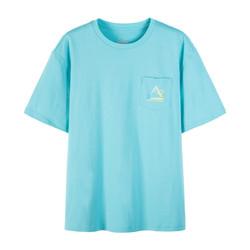Technical fabrics have been a hot topic in the textile and clothing industries in recent years. They combine advanced technology and traditional textile techniques to bring more functionality and fashion to clothing. In autumn and winter, the application of technical fabrics has become more and more widespread. The following is a discussion on the future trends of technical fabrics and their applications in autumn and winter.
1. Future trends:
1. Sustainable development: With the improvement of environmental awareness, sustainable development will become a technological fabric important direction of development. Future technical fabrics will pay more attention to environmentally friendly raw materials and production processes, reduce the consumption of natural resources, and reduce their impact on the environment.
2. Intelligent: With the development of the Internet of Things and artificial intelligence, future technological fabrics will be more intelligent. For example, smart sensing fabrics can adjust parameters such as temperature and humidity according to environmental changes, providing a more comfortable wearing experience.
3. Diversified functions: In addition to basic functions such as warmth, windproof, and moisture permeability, future technological fabrics will have more types of functions. Such as antibacterial, anti-ultraviolet, anti-pollution, etc., to provide consumers with more comprehensive protection.
4. High performance: Technical fabrics will pursue higher performance indicators, such as better elasticity, wear resistance, tear resistance, etc. Such technical fabrics can enhance the durability and service life of the product.
2. Application in autumn and winter:
1. Warmth function: The weather is cold in autumn and winter, and the warmth function of technical fabrics becomes important. Considerations. Clothing made of thermal technology fabrics can provide better thermal insulation effect, allowing people to stay warm and comfortable in low-temperature environments.
2. Moisture permeability and perspiration: Technical fabrics have good moisture permeability, which can help the human body to discharge sweat and keep it dry and comfortable. In autumn and winter, the human body is prone to sweating, and moisture-permeable and sweat-wicking technical fabrics can prevent moisture troubles and avoid colds and skin problems.
3. Windproof and waterproof: Winter is often accompanied by biting cold winds and rainy weather. The windproof and waterproof functions of technical fabrics can effectively withstand the cold and moisture from the outside and protect the body from the outside weather. intrusion.
4. Soft and comfortable: While providing functionality, technical fabrics also focus on improving comfort. Soft and comfortable technical fabrics can increase the wearing comfort of clothing, giving people a better wearing experience in autumn and winter.
Summary: Future technological fabrics will pay more attention to the development of sustainable development, intelligence and multi-function. In autumn and winter, the application of technical fabrics will focus on aspects such as warmth retention, moisture permeability and perspiration, windproof and waterproof, and comfort. With the continuous advancement of science and technology, people’s demand for technological fabrics will become higher and higher. It is believed that the application of technological fabrics in autumn and winter will be more extensive and diversified in the future.








